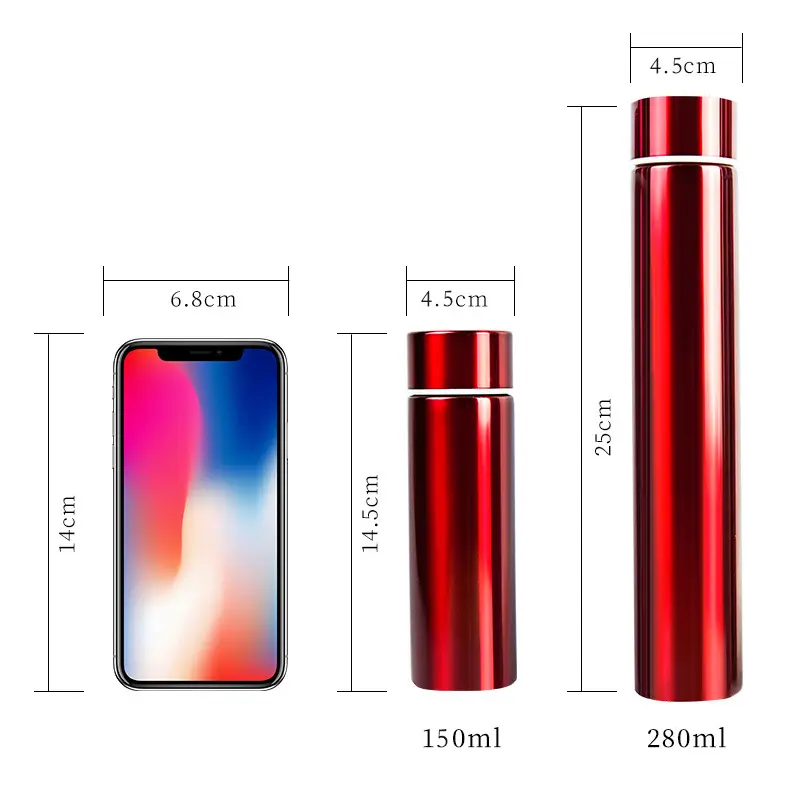Does tea brewing in a thermos cup release heavy metals?
"There are three treasures for middle-aged people, the wolfberry and jujubethermos cup." After the beginning of winter, thermos cups have become the standard for many middle-aged people, and even some young Buddhists have picked up thermos cups. However, rumors that brewing tea and wolfberry in stainless steel thermos cups will cause heavy metals to dissolve and cause chronic poisoning have made many people uneasy when using thermos cups. Is drinking hot tea every day really so dangerous?Making tea in a compliant thermos cup will not cause poisoning

The saying that brewing tea in a thermos cup will cause poisoning comes from the fact that tea scale will be produced after tea is brewed in a thermos cup. Many people are worried that the tea scale will adhere to the inner wall of the stainless steel for a long time and corrode the stainless steel, causing the heavy metals in the stainless steel to dissolve, thus causing chronic poisoning. After tea was hit, wolfberry and carbonated drinks were also added to the blacklist of stainless steel thermos cups.
In this regard, Professor Ren Yibin from the School of Materials Science and Engineering of Shenyang Ligong University said with a smile: Stainless steel is not so "vulnerable". Only steel containing more than 13% chromium can bear the name of stainless steel. The alloy element chromium It can ensure the formation of passivation film on the stainless steel surface and protect the stainless steel matrix. In the GB9684-2011 national food safety standard, there are clear requirements for stainless steel materials for tableware. Usually, in addition to chromium, alloy elements such as nickel, molybdenum, manganese, copper, nitrogen, and vanadium are also added to stainless steel to improve the mechanical properties and corrosion resistance of stainless steel. However, lead, cadmium, and arsenic are harmful substances in stainless steel. Impurity elements are strictly limited.
"However, stainless steel is not 'indestructible'. When encountering corrosive environments such as acids, alkalis, and salts, corrosion may still occur and lead to the dissolution of some alloy elements." Ren Yibin said, so the national standard GB9684 -2011 also focuses on the dissolution limits of lead, chromium, nickel, cadmium and arsenic. The test conditions are harsh conditions that are almost impossible to encounter in daily life. It needs to be boiled in 4% acetic acid for 30 minutes and at room temperature. After being left for 24 hours, the metal content in the stainless steel vessels was analyzed. The dissolution amounts of various alloy elements in the stainless steel vessels were less than 0.5 mg/square decimeter.

Wang Hao, an associate professor at the School of Food at Tianjin University of Science and Technology, said that a common saying in the field of food science is that "toxicity cannot be discussed regardless of dose." Although tea, wolfberry, carbonated drinks, etc. have acid and alkaline properties, they are very weak. Not to mention tea stains, even if you soak for several days, there is no need to worry about the dissolution of alloy elements for stainless steel cups that meet the standards. Even if trace amounts of alloying elements are corroded and leached out, the chromium, nickel, manganese, molybdenum and other alloying elements in stainless steel for tableware are all essential trace elements for our human body and will not affect our health.It’s unreliable to rely on magnets to choose a thermos cup
"Although stainless steel thermos cups are not as fragile as we imagined, when consumers choose thermos cups, they must choose stainless steel thermos cups for tableware that meet quality standards." Ren Yibin reminded everyone.
On the e-commerce platform, if you click on the specifications and packaging menus of some well-known brands of thermos cups, the materials inside will be marked with 316, 304 stainless steel or other types of stainless steel grades. This string of numbers makes consumers a little confused. Some consumers will distinguish the quality of stainless steel by whether it is magnetic.
Ren Yibin introduced that according to the national standard GB9684, stainless steel materials for tableware include austenitic stainless steel, austenitic-ferritic duplex stainless steel, ferritic stainless steel, etc. The biggest difference between these three types of stainless steel is just like their names. One of the performance differences is magnetism. Among them, only austenitic stainless steel is non-magnetic, and the other two are commonly known as "stainless iron" among the people. The price of austenitic stainless steel is generally higher than the latter two. In addition, there are many kinds of austenitic stainless steel, and the prices vary greatly. Among them, the main alloy elements of 304 and 316, which are relatively expensive, are iron, chromium, and nickel, but the proportions of chromium and nickel are different. Among them, nickel is a relatively expensive alloy element whose main function is to ensure the stability of the austenite structure and properties of stainless steel. In addition, there is low-nickel (nickel-free) manganese-containing austenitic stainless steel. Since manganese and nitrogen are used to replace part of the nickel to stabilize the austenite structure, the price is relatively cheap, but the performance and safety are not bad.
"As long as the above-mentioned types of stainless steel meet quality standards, there is basically no problem with their safety. Moreover, regular manufacturers and brands will indicate the grade or chemical composition of the stainless steel on the label." Ren Yibin specially reminded consumers, People who are allergic to metal elements must check the specific composition of the corresponding stainless steel online based on the stainless steel brand marked on it. For example, patients with nickel allergies should not choose 304 stainless steel products, while patients with manganese allergies should not choose stainless steel products with low nickel and manganese content.Brewing tea in a stainless steel thermos cup damages the taste
"Although stainless steel thermos cups are not poisonous, long-term high temperature environment may affect the nutrition and taste of some foods." Wang Hao said, for example, making tea in a thermos cup will affect the taste of the tea. That’s because tea contains tea polyphenols, tannins, aromatic substances, amino acids, multivitamins and other substances. When boiling water is used to make tea in a teapot or ordinary glass, the active substances and flavor substances in the tea will soon disappear. After dissolving, the aroma of tea overflows. Making tea with a stainless steel thermos cup will continue to maintain a warm environment, which is equivalent to using high-temperature water to continuously cook tea. Long-term high temperature will fully dissolve the tea polyphenols in the tea, and at the same time, the active substances and aromatic substances will be destroyed by heat, resulting in The quality of the tea soup will also be damaged. The tea soup will be thick, dark in color and bitter in taste.

For high-protein drinks such as soy milk and milk, it is not recommended to use stainless steel thermos cups. This is because bacteria will multiply at a suitable temperature, and the only way to store food is through sterilization or low-temperature storage (which delays spoilage). Soy milk, milk, etc. are rich in nutrients. If stored at a suitable temperature for a long time, microorganisms will multiply in large numbers. Once bacteria grow in soy milk and milk, it will quickly become rancid and deteriorate, and it will become flocculent and tofu-like in appearance, which may cause diarrhea after consumption. Therefore, for this type of drink, it is best to drink it within 3 hours. If you want the soy milk and milk to last longer, you must first soak the thermos cup in boiling water and wash it to kill any bacteria that may be present in it, and then pour the soy milk and milk into it.
For middle-aged people's favorite wolfberry, Wang Hao does not recommend using a thermos cup to brew it for a long time: "Brewing wolfberry in a stainless steel thermos cup will not produce harmful substances to health, but when soaking wolfberry in hot water, if the temperature of the hot water If the temperature exceeds 80 degrees Celsius and the wolfberry is soaked in high-temperature water for a long time, many of the vitamins and other nutrients in the wolfberry will be lost. Moreover, the medicinal effects of the wolfberry cannot be fully exerted due to the water temperature and soaking time. Due to the influence of other factors, only some of the medicinal ingredients in wolfberry can be released into the water or soup.”











